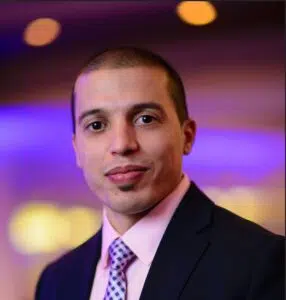Table of Contents
Introduction
Every two weeks, a language disappears. According to UNESCO, nearly 40% of the world’s 7,000+ languages are endangered, and many are on the verge of extinction. This language decline raises urgent questions: why do languages die, why are so many languages disappearing, and what can we do to prevent more languages from dying out?
In this blog, we’ll examine the causes of language death, why we should save dying languages, and what measures can be taken to prevent languages from dying. We’ll also explore how digital tools, education, and cultural pride can contribute to saving dead languages and protecting the diversity of human expression.
Why Do Languages Die

So, why do languages die out or even go extinct? Several interrelated factors contribute to language decline and disappearance:
- Colonization and Historical Suppression: Many languages were suppressed during colonization, as dominant powers imposed their own languages for governance, education, and religion.
- Globalization and Economic Pressures: People often abandon their native languages in favor of more “economically useful” ones like English, Mandarin, or Spanish.
- Stigma Against Minority Languages: Social pressure and negative stereotypes can lead communities to feel ashamed of their heritage languages.
- Urban Migration and Intermarriage: As people move to cities or marry outside their language group, the use of their original language may decline at home.
These factors are leading reasons languages are dying worldwide, leaving many communities at risk of losing their linguistic heritage forever.
What We Lose When a Language Dies
When languages die off, the loss is far greater than just words. Each language carries:
- A unique worldview and philosophy
- Traditional ecological and medicinal knowledge
- Stories, oral traditions, and cultural memory
- A deep sense of cultural identity
When languages disappear, we lose irreplaceable wisdom about the environment, human history, and diverse ways of seeing the world. This is why we should save dying languages — they are essential to preserving humanity’s shared heritage.
Causes of Language Decline and Extinction
To understand why languages go extinct, we need to look at the most common causes:
- Colonization and cultural assimilation
- Economic inequality and pressure to adopt dominant languages
- Language stigma within minority groups
- Lack of education in local or heritage languages
- Urbanization and migration patterns
In short, the causes of language death are deeply tied to political, social, and economic structures.
How to Save a Dying Language

So, how to save a dying language in today’s interconnected world? Communities and organizations are applying several strategies:
- Community-Led Revitalization: Teaching children the native language in schools, running cultural events, and producing children’s books, songs, and media.
- Digital Tools and Social Media: YouTube, TikTok, and Facebook are being used to teach, perform, and share content in endangered languages.
- Archiving and Databases: Recording stories, songs, and conversations for future generations.
- Government and NGO Support: Policies that encourage bilingual education and protect minority language rights.
These measures show that saving dead languages is possible with community commitment and global support.
Will Social Media Save Dying Languages?
Digital platforms are powerful in amplifying endangered voices. Young speakers use them for:
- Short video lessons
- Storytelling in heritage languages
- Songs, poems, and cultural content
But relying only on social media is risky. Content may disappear if platforms shut down, internet access is limited, or policies change. That’s why long-term strategies — like teacher training, creating public archives, and formal language education — are necessary to ensure sustainability.
Examples of Language Revitalization Success
Several communities have shown that saving endangered languages is possible:
- Welsh: Government policies and education programs have helped grow the number of Welsh speakers.
- Hawaiian: Once near extinction, the language has seen a revival through immersion schools and community efforts.
- Livonian (Latvia): Though nearly extinct, efforts via social media and academic support have sparked new interest.
These examples show that global collaboration in language revitalization can yield tangible results.
Related: How Many Languages Does The Average American Speak
Language and Cultural Identity: Why It Matters
Language is deeply tied to cultural identity. Losing a language often means losing a part of who we are. Language connects us to our ancestors, shapes how we view the world, and forms the basis of community bonds.
By saving languages, we aren’t just preserving words — we’re protecting diverse ways of thinking and living.
Related: Top 7 Fastest Growing Languages and Their Global Impact
FAQs on Language Death
- What language is currently dying?
- Many. For example, Livonian (Latvia), Manx (Isle of Man), and Ainu (Japan) are considered critically endangered.
- What is a leading cause of language loss?
- Globalization and economic pressure to adopt dominant “killer languages” like English and Mandarin.
- What are the killer languages?
- English, Spanish, Mandarin, Arabic, and French — they often replace minority languages due to global influence.
- What language will we speak in 2050?
- While “killer languages” may dominate, linguistic diversity will persist. However, without intervention, hundreds of smaller languages could disappear.
- Why are so many languages disappearing?
- Because of colonization, urban migration, cultural stigma, and the lack of intergenerational transmission to children.
Final Thoughts
The extinction of languages is not inevitable. Through a mix of community action, education, digital media, and global support, we can protect and revitalize languages on the brink.
Whether you’re a linguist, a teacher, or simply someone passionate about culture, you can play a part in reversing this trend. Share content, learn a local language, support preservation projects — and most importantly, help raise awareness about what we lose when a language dies.


